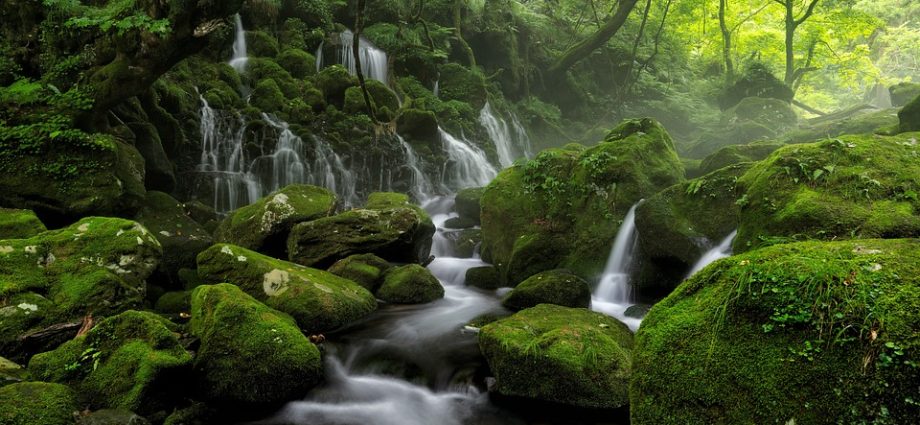Japan’s Unique Fashion Scene: Exploring the Country’s Creative Styles
Japan is a country that is well-known worldwide for its unique and innovative fashion scene. It’s a realm where high-end designers, streetwear artists, and traditional craftspeople coexist and form a vibrant, fresh, and incredibly diverse landscape of styles.
The country’s fashion scene is so enthralling that it has become an essential part of its overall culture, with designers from all over the world coming to Japan to take inspiration and witness the latest trends.
It is no wonder that Japan is a top destination for tourists who are looking to explore the country’s creative styles. This article aims to showcase Japan’s unique fashion scene and provide readers with the top tourist attractions in the country.
Japanese Street Fashion
The streetwear culture in Japan is one of the country’s most celebrated aspects of fashion. It is a realm that features fearless, edgy, and playful styles, that merge classic and modern elements to create new forms of expression.
Popular Japanese streetwear brands like A Bathing Ape and Comme des Garçons have left lasting imprints on the modern streetwear style. They have pushed creative bounds and added a new layer to the fashion game.
Harajuku
Harajuku is one of Japan’s most famous fashion districts that explicitly promotes street fashion culture. It is the perfect venue for fashion-forward shoppers and tourists looking to immerse themselves in the cutting-edge fashion scene.
The area is a hub for teens and young adults who flock to its streets to showcase their daring and quirky styles. The streets of Harajuku are always bustling with energy, with stores like Takeshita Street and Laforet Harajuku offering unique and trendy designs.
Japanese High-end Fashion
Japanese high-end fashion blends superior craftsmanship, minimalism, and an emphasis on functionality to create an elegant and refined appeal. The designs are renowned for their quality, durability, and contemporary, minimalistic aesthetics.
Japanese fashion houses like Issey Miyake and Yohji Yamamoto have set the benchmark for this high-end fashion style.
Ginza
Ginza is an upscale shopping district in Tokyo that is famous for its swanky restaurants, luxury jewelry, and fashion boutiques. It is home to some of Japan’s most famous high-end fashion brands and flagship stores.
From brands like Chanel, Dior, and Louis Vuitton to Japanese haute couture labels like Comme des Garçons and Yohji Yamamoto, the district has it all for the most high-end fashion-savvy individuals.
Japanese Traditional Fashion
Japan’s traditional fashion culture stands as an essential component of the country’s overall fashion identity. It represents a reverence for the past, and traditional heritage while highlighting the importance of modernization.
Kimono
The Kimono has become one of Japan’s most iconic cultural symbols, preserving the rich cultural heritage of the country. The traditional garment is draped around the body and belted, with various styles and designs that vary based on occasion and region.
A visit to a kimono showroom or a traditional tea ceremony in a kimono is a perfect way to appreciate the elegance of the Japanese traditional fashion style.
Kyoto
Kyoto is the city renowned for its traditional culture and is a hub for traditional clothing styles. The city has many old-style shops that specialize in kimono, yukata, and obi belts, often owned by traditional Japanese families who have been in the business for generations.
Frequently Asked Questions (FAQs)
1. What is the style of Japanese fashion?
Japanese fashion style is highly diverse, ranging from traditional designs like the Kimono to cutting-edge streetwear styles that merge classic and modern elements.
2. What is Harajuku fashion?
Harajuku fashion is a subculture and fashion style that originated in Harajuku district of Tokyo, characterized by highly quirky, edgy, and playful designs.
3. What are the famous fashion brands in Japan?
Some of Japan’s famous fashion brands include Comme des Garçons, Issey Miyake, Yohji Yamamoto, and A Bathing Ape.
4. What is a kimono?
A kimono is a traditional Japanese garment that is draped around the body and belt with various styles and designs that vary based on occasion and region.
Top 10 Tourist Attractions in Japan’s Unique Fashion Scene: Exploring the Country’s Creative Styles
1. Harajuku: Tokyo’s vibrant fashion district that promotes streetwear culture.
2. Ginza: Tokyo’s upscale shopping district that is home to some of Japan’s most famous high-end fashion brands.
3. Shibuya: A hot and thriving location hub for Japanese youth and fashion enthusiasts.
4. Omotesando: Tokyo’s most high-end upscale shopping district lined with flagship designer stores.
5. Takeshita Street: A popular Tokyo street known for its quirky, playful, and youthful fashion stores.
6. Laforet Harajuku: A Harajuku landmark that is a popular shopping mall with over 140 stores.
7. Kyoto Gion: A beautiful traditional district in Kyoto that is famous for its geisha cultures and traditional fashion style.
8. Roppongi Hills: A high-end shopping mall located in the Roppongi district of Tokyo, considered one of the world’s most beautiful shopping centers.
9. Ura-Harajuku: Tokyo’s most underground fashion district that features unique, offbeat, and fascinating fashion styles.
10. Osaka Amerikamura: Also known as “Amemura,” a vibrant district in Osaka that is famous for its bold, playful, and colorful fashion style.
In conclusion, Japan’s fashion scene stands out for its ability to merge traditional ideas with modern elements, resulting in fashion culture that is always in flux, innovative, dynamic, and attractive. The above-listed tourist attractions and fashion styles provide both locals and travelers with unique fashion experiences and unforgettable moments in Japanese fashion culture.
